The most important difference between Hodgkin's disease and non-hodgkin's lymphoma
Hodgkin's Disease and Non-Hodgkin's Lymphoma
What are lymphomas?
Lymphomas are cancers that affect the white blood cells of the immune system. They are characterized by the abnormal growth of lymphocytes, the infection fighting cells in the lymph nodes, spleen, and thymus. The tonsils, stomach, small intestine, and skin may also be affected. Lymphomas are usually classified as Hodgkin's disease, the most common form, or non-Hodgkin's lymphoma. There are also other rare forms of the disease, such as mycosis fungoides, a primary skin lymphoma. Burkitt's lymphoma, rare in most of the world, is the most common childhood cancer in central Africa and is one of the fastest growing human cancers.
What is the role of the lymph system in the body?
The lymph system is made up of nodes and thin walled tubelike veins along which the nodes lie. Its job is to help fight diseases and infection, and it serves as part of the body's drainage system. Lymph nodes are usually very small and soft but become enlarged when there is an infection or disease present, such as mononucleosis or strep throat. Lymph glands are found throughout the body: behind the ears, in the groin, behind the knee, in front of the elbow, under the armpit, at the angle of the jaw, deep inside the abdominal cavity, at the junction of the right and left bronchi, and in many other areas. Lymphatic tissues include the tonsils, adenoids, and spleen. The lymph system is a sensitive indicator of illness in the body.
How is lymphoma diagnosed?
It is usually diagnosed by biopsy of a lymph node and the examination under the microscope by a hematopathologist.
How are lymphomas treated?
The treatment depends on where in the body the disease is found. Lymphomas differ from many other cancers in that they are not treated by surgery. However, lymphoma can be successfully treated by chemotherapy and/or radiation.
What is lymphangiography or a lymphangiogram?
A lymphangiogram is a test which shows where malignant lymph nodes are located in the abdomen. The procedure is done under local anesthesia, by injecting a special dye into the lymph vessels of the foot. The lymphatic system carries the dye to all lymph nodes. When the x-rays are taken, the dye outlines the lymphatic system. It shows the size of various lymph nodes, their shape, and even their internal structure. This allows the doctor to identify abnormal nodes. The patterns of lymph flow that show up on the x-rays are also important, because lymph does not pass easily through the nodes that are filled with cancerous cells, so abnormal patterns of lymph flow develop. From this xray, the doctor is able to identify involved nodes and to choose several lymph nodes to remove and examine. Because the dye remains in the lymph vessels for long periods of time after a lymphangiogram, x-rays can be taken during and after therapy to monitor the effects of treatment on the cancer.
When is a laparotomy used to diagnose lymphoma?
A laparotomy is a surgical operation to explore the entire abdomen. It allows the doctor to determine the extent of the disease and if it has spread to the abdomen. It was, in the past, a routine procedure for diagnosing lymphoma. Now it is performed only if the information gained will actually change the treatment to be given. Sometimes a simpler procedure is done, called a periotoneoscopy. This uses a much smaller incision in the abdomen through which a fiberoptic instrument, called a periotoneoscope, can be inserted to examine internal organs and take tissue samples. In most cases of non-Hodgkin's disease, laparotomy is not recommended for diagnostic purposes, since other clinical methods can be used to tell the extent of the disease accurately enough to stage the disease properly. If performed, a laparotomy should be done by a team of experienced surgeons.
Why is staging so important?
Because the symptoms, rate and pattern of spread, and treatment of lymphomas vary greatly, it is important that the disease be accurately diagnosed by an experienced pathologist who can recognize subtle cellular distinctions among the various lymphatic cancers. The nature and extent of your first treatment influences and can severely limit future treatments. Therefore it is important for the doctor to stage your condition correctly before beginning treatment. The staging procedure may take from 1 to 3 weeks.
What definitions do doctors use in classifying lymphomas?
Doctors use a variety of terms to classify lymphomas in an attempt to describe the cell where the lymphoma originates as well as to indicate certain microscopic features of the cells. So much progress has been made in the study of lymphomas that new terminology is constantly being invented and old terminology updated.
The unique features of each lymphoma arise from its structure and growth patterns. The indolent lymphomas spread slowly, often taking years to develop into aggressive disease. The aggressive lymphomas tend to progress quickly. Without treatment these rapidly growing lymphomas would be fatal within 6 months. Lymphomas are also classified into nodular and diffuse lymphomas, based on the growth pattern of the cancer cells as seen through the microscope. These categories are further subdivided by cell type into lymphocytic (cancer cells are small and resemble lymphocytes), histiocytic (cancer cells are large and resemble macrophages or histiocytes), and mixed (cells have both features). Most nodular lymphomas are indolent, and most diffuse lymphomas are aggressive. All of this terminology can be extremely confusing to a patient who is trying to understand the nature of his disease, but if you ask the doctor, he should be able to clarify for you exactly what is involved in your disease process.
Is pregnancy a problem for a woman with lymphoma?
Although pregnancy has no effect on the course of the illness, women with lymphoma should consult with their physicians about family planning. Treatment cannot be given during pregnancy, since drugs can be harmful to the fetus. Family planning is an important issue because it is difficult to predict when treatment may be needed. Men should also discuss the possible effects of changes in sperm due to drugs and radiation therapy. Some work has been done in the field of repositioning ovaries to sites that can be shielded when x-ray therapy is performed. The disease itself does not seem to have an adverse effect on fertility, the course of pregnancy, labor, or the baby. The treatment and its side effects, however, must be taken into consideration in making a judgment. If at all possible, a waiting period after remission is advised before becoming pregnant.
If I have an enlarged lymph node should I see a doctor immediately?
Lymph glands may be enlarged as a result of infections or other illnesses such as mononucleosis or rheumatoid arthritis but any lymph gland in the neck, armpit, or groin that remains enlarged for 3 weeks or longer should be checked by your doctor.
What causes lymphoma?
Though a great deal is known about lymphomas, their actual cause remains a mystery. Some researchers suspect a virus, but direct proof is lacking. Research has shown an increase in the rate of lymphomas among survivors of the atomic bomb in Hiroshima. Persons with damaged immune systems, caused either by immune disorders or immunosuppressive drugs, are also more susceptible to lymphoma. There does not seem to be a hereditary factor involved,although there are instances where more than one person in the family has had the disease. The incidence is higher among males than females.
What is the most usual symptom of Hodgkin's disease?
The most common first sign is a swollen lymph gland, in the neck, armpit, or groin, caused by enlarged lymph nodes. Many doctors believe that Hodgkin's disease begins in one area of the lymph system and, if left unchecked, spreads throughout the system and later to other tissues and organs. Unexplained weight loss and unexplained fever and night sweats should all be reported to the doctor. An enlarged spleen or liver may be present in some instances. Skin rashes, itching, and weakness may occur. Anemia and reduced ability to fight infection may develop.
Is itching a common symptom for those with Hodgkin's disease?
Itching or pruritus, as it is sometimes referred to by the medical profession is not unusual. It usually disappears with treatment of the disease, and some relief may be possible with antihistamines. It may reappear at a later time and should be reported to the physician if it occurs. This symptom is one of the most distressing and most difficult to cope with for many patients.
Hodgkin’s Vs Non-Hodgkin’s Lymphoma
Is fever often a symptom of Hodgkin's disease?
A low grade fever is not uncommon, though some patients may be unaware of it unless they experience night sweats. A pattern ofhigh fever alternating with normal or subnormal temperature may also be seen.
Are there any other symptoms?
Some patients report that an alcoholic drink can induce pain in enlarged lymph nodes, sometimes accompanied by nausea and vomiting. This symptom occurs in less than 5 percent of all patients.
Hodgkin's Lymphoma Symptoms
How does Hodgkin's disease differ from non-Hodgkin's lymphoma?
Hodgkin's disease has unique microscopic features that distinguish it from other lymphomas. Often, it is recognized by the presence of unique cells, called the Reed-Sternberg cells, in lymph tissue that has been removed by surgery for biopsy. Also, Hodgkin's disease tends to follow a more predictable pattern of spread and its spread is generally more limited than that of the non-Hodgkin's lymphomas. By contrast, the non-Hodgkin's lymphomas are more likely to begin in sites like the liver and bones than in the lymph nodes.
Persons Most Likely to Get Hodgkin's Disease and Non-Hodgkin's Lymphona
• Hodgkin's disease: Peak ages: 20-25 and late 70s, mostly people between 15 and 34, more males than females.
• Non-Hodgkin's lymphomas: Peak age 55-70, very few under 50, more males than females, more whites than blacks.
Symptoms of Hodgkin's Disease
• Painless swelling of lymph nodes in neck, armpits, or groin
• Fever
• Persistent fatigue
• Weight loss
• Itching
• Night sweats
Types of Hodglcin's Disease
• Lymphocyte predominance
• Nodular sclerosis
• Mixed cellularity
• Lymphocyte depletion
• Unclassified
Symptoms of Non-Hodgkin's Lymphoma
• Painless swelling of lymph nodes in neck, groin, or armpit
• Small lumps in skin
• Skin rashes
• Enlarged tonsils
• Swelling in some part of abdomen
• Fever
• Feeling of weakness
• Bone pain
• Loss of appetite
Tests for Hodgkin's Disease and Non-Hodgkin's Lymphoma
• Complete history with special attention to unexplained fever, night sweats, or weight loss of more than 10 percent in prior 6 months
• Physical examination with particular attention to lymph nodes, liver, spleen, and bone tenderness
• Chest x-ray and/or whole lung tomography and CT scans
• Blood and urine tests
• Bone marrow tests
• Lymphangiography Depending on condition, these may also be needed:
• Liver, spleen, and bone scans
• Staging laparotomy (in selected patients)
• Splenectomy
• Liver biopsy
• Kidney tests
Careful and complete testing is of the essence before any treatment is given so be patient. The initial treatment determines the course of the disease, so tests must be done in depth to assure the most effective treatment. (Of course, the extent of testing is determined by the age and state of health of the patient. In those whose age and medical problems limit therapy, less aggressive testing procedures are done.)
What is non-Hodgkin Lymphoma?
Questions to Ask Your Doctor If You Have Hodgkin's Disease or Non-Hodgkin's Lymphoma
• What have you found that makes you think I have Hodgkin's disease or non-Hodgkin's lymphoma?
• Is the disease confined to one area or more than one area?
• Can my case be discussed with someone at one of the cancer centers?
• Will my spleen have to be removed?
• Are you absolutely certain about the extent of the disease?
• Has a hematopathologist checked the pathology? I want to be certain that the diagnosis has been confirmed by someone else.
• Did the pathologist find Reed-Sternberg cells?
• Can you explain what cell type is involved and how my disease has been staged?
• What plans do you have for my treatment, and what alternatives do I have?
• How many cases like mine have you treated? For female patients of childbearing age (or younger):
• Can I plan on being married and having children?
• If I am pregnant, will the pregnancy have to be terminated?
• Would you advise me not to have any more children?
• What effect would pregnancy have on me and the child?
• How long would I have to wait before I can think about becoming pregnant? For young male patients:
• How will this affect my ability to father children?
• What can be done to avoid sterility?
Is there an association between Hodgkin's disease and mononucleosis?
It does not seem so. Epstein-Barr virus, a herpes virus, has been isolated from patients with Burkitt's lymphoma, the most common cancer among African children. This virus is also linked with one type of infectious mononucleosis. These observations led to a search for associations between mononucleosis and Hodgkin's disease. Most studies have found no convincing evidence of increased risk of Hodgkin's disease for people who have had infectious mononucleosis. Possible associations between Hodgkin's disease and tonsillectomy, polio, multiple sclerosis, and some other conditions have also been explored but without success.
What are Reed-Sternberg cells?
These are the abnormal cells that help confirm a diagnosis of Hodgkin's disease. They are named for the two scientists who first identified them. Reed-Sternberg cells alone are not sufficient for diagnosis of Hodgkin's disease, since similar cells have been described in mononucleosis and other diseases.
Reed-Sternberg Cell
Why is it important to have Hodgkin's disease properly classified before treatment is started?
A complete evaluation before the start of treatment is necessary because the nature and extent of previous treatment influences and can severely limit future treatment.
How is Hodgkin's disease staged?
Hodgkin's disease is classified into four stages, depending on the extent of the disease. Stages I and II denote involvement of one or more lymph-node regions above or below the diaphragm. Stage III includes disease limited to the lymph nodes, but both above and below the diaphragm. Biopsy proven involvement of the liver, bone marrow or other organs is defined as Stage IV disease.
What is the usual treatment for Hodgkin's disease?
Treatment depends upon the stage of disease when the patient is diagnosed. The preferred treatment for early stage Hodgkin's disease is high intensity radiation of the lymph nodes. According to the National Cancer Institute, research has shown that radiation therapy to large fields at high doses is more effective at preventing relapse than radiation of the diseased nodes alone. If up to date radiation equipment or radiotherapeutic expertise is not available in your community, you should be referred to the nearest major medical center for this treatment. Modern radiation equipment, like the linear accelerator, is capable of quickly delivering highintensity radiation to large areas with little scattered radiation beyond the targeted field. Combination chemotherapy pioneered by National Cancer Institute researchers is considered the most effective treatment for more advanced Hodgkin's disease (Stages III and IV). For Stages IIB and IIIA Hodgkin's, cancer researchers are still examining the comparative advantages of chemotherapy, radiotherapy, or a combination of the two.
Is there any long term danger to this intensive radiotherapy and chemotherapy?
Despite their effectiveness, some cancer treatments are suspected to be cancer causing agents themselves. For example, several studies have shown an association between certain therapies and the development of leukemia many years later. The risk of leukemia, estimated at around 5 percent at 10 years by most studies, seems highest in patients aged 40 years and older who have been treated with both intensive radiotherapy and intensive chemotherapy.
What treatment is available to a patient who relapses after the first set of treatments?
It depends on the first treatment and also on the stage of the disease. If the treatment was radiation, chemotherapy may be administered. If chemotherapy had been given, another combination of drugs might be tried.
Is progress being made in the treatment of Hodgkin's disease?
Yes, definitely. Before 1970, few patients with advanced Hodgkin's disease recovered from their illness and most died within 2 years. Today, there is a far brighter outlook. Now, more than half ofall patients with advanced Hodgkin's disease are disease free for more than 10 years. For earlystage Hodgkin's patients, the news is even better. Due mainly to advances in radiotherapy, the cure rate for early Hodgkin's disease has soared to nearly 90 percent in some treatment centers. Scientists are continuing their search for safer and more effective drugs to combat Hodgkin's disease. Carefully controlled studies comparing established regimens with new and promising approaches using drugs, immunotherapy, and radiation are yielding steady progress in the treatment of Hodgkin's disease and other forms of lymphatic cancer.
What tests are usually required to diagnose non-Hodgkin's lymphoma?
Tests include blood tests, a biopsy, and test of kidney function. Bone marrow biopsy, as well as some of the more complicated tests used in diagnosing Hodgkin's disease, may be required.
What symptoms usually accompany non-Hodgkin's lymphoma?
The most common symptom of non-Hodgkin's lymphoma is painless swelling of lymph nodes in the neck, groin, or armpit. In about one-third of all cases of non-Hodgkin's lymphoma, enlarged lymph nodes are not the first symptom.
Instead, small lumps on the skin, skin rashes, enlarged tonsils, or a swelling in some part of the abdomen may be early signs. Other symptoms that sometimes occur are fever, a feeling of weakness, bone pain, and loss of appetite.
What is meant by indolent non-Hodgkin's lymphoma?
The indolent non-Hodgkin's lymphomas are said to have "favorable" histologies (growth patterns). They are slowgrowing cancers affecting mainly adults over age 40. Many patients have no symptoms other than painless enlargement of lymph nodes in the neck, armpit, or groin. Five to 10 years after the disease begins, the cancer becomes more aggressive, causing fever, night sweats, and weight loss. At this time an indolent lymphoma may change to one of the aggressive forms. There are two schools of thought regarding treatment of the slow growing lymphomas. One approach is not to treat patients who are relatively symptomfree. Another approach is to begin treatment at the time of diagnosis in an effort to achieve and maintain complete remission. Long-term studies comparing various approaches are helping scientists to identify the safest, most effective therapy for these diseases. Meanwhile, investigators are continuing their search for new ways to prevent recurrence and to bolster the body's own natural defenses against cancer. One substance under active study is interferon, which has shown some activity against nodular lymphoma in early clinical trials. Another promising area of research for some types of lymphoma is bone marrow transplants for patients who have had relapses.
Non-Hodgkin's lymphoma (NHL) B-cell and T-cell | Aggressive and Indolent
What is aggressive non-Hodgkin's lymphoma?
Several forms of non-Hodgkin's lymphoma are aggressive cancers which, if left untreated, rapidly spread and become fatal. Approximately half of all patients with non-Hodgkin's lymphoma have this aggressive type, which includes nodular histiocytic lymphoma, diffuse histiocytic lymphoma, diffuse mixed lymphocytic histiocytic lymphoma, diffuse undifferentiated lymphoma, and diffuse lymphoblastic lymphoma. Combination chemotherapy is the mainstay of treatment for patients with these lymphomas, since most already have disease in their systems or advanced disease at the time they are diagnosed. Most patients with aggressive lymphoma who achieve complete remission can live for a long time without any sign of disease. Moreover, scientists have observed that practically all patients with these lymphomas who survive the first 2 years without a relapse (instead of the usual 5-year measure) are permanently cured.






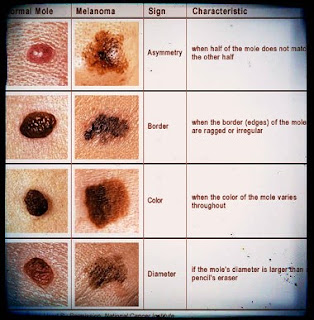
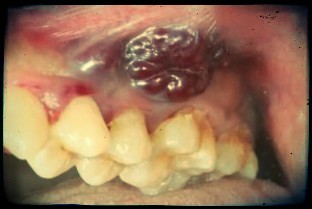
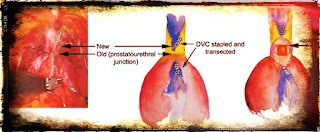
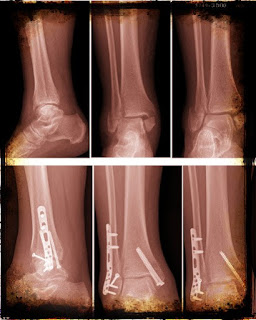
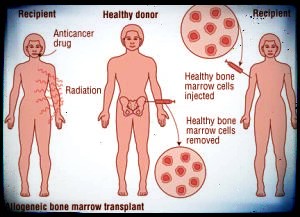


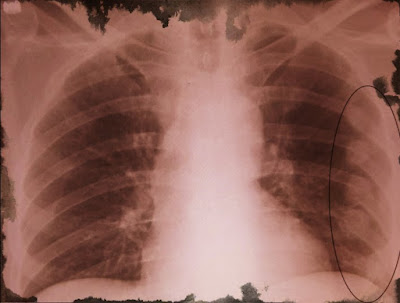

Comments
Post a Comment